人教版新目标初中英语九年级上册Where would you like to visit说课稿8篇
-
- 页数:33页
- 字数:约 40781 字
- 大小:156.50KB
- 格式:.doc
- 版本:Office2016及以上版本
- 作者:二十四设计
Where would you like to visit说课稿8篇
Where would you like to visit? 第一课时说课稿
尊敬的各位领导、老师,您们好!我叫向清华,来自保靖县普戎九年一贯制学校。
我说课的内容是新目标英语九年级第七单元Where would you like to visit?的第一课时Section A(1a-1c)。说课的内容包括四部分:一、分析教材;二、说教法与学法;三、说教学设计与设计理念;四、说教学程序。

一.分析教材
(一)教材的地位和作用
本单元的学习目标是Talk about places you would like to visit.目标语言是:Where wouldyou like to visit (go on vacation)?—I’d like to visit Florida. I hope to visit Hawaii one day.这是本单元的重点也是难点。
本节课作为本单元的第一课时,要向学生展示新的语言目标,着重训练听,说和写。
(二)教学目标:
1、知识目标:
句型:—Where would you like to visit (go on vacation)?
—I’d like to visit Florida.
—Why ?
—I like exciting vacations.
词汇:tiring ,educational,fascinating,peaceful,historic,
thrilling,take it easy,trek , jungle.
2、能力目标:
首先,学生会使用以下基本句型:
—Where would you like to visit(go on vacation) ?
—I would like to visit France.
第二、学生学会谈论自己想去的地方。
第三、训练听说能力.
3、情感目标:
通过本节课的学习,增强学生的实际交际能力,开阔视野,加深对世界各地的地理环境,风土人情,人文教育的了解,自觉地保护地球,保护环境。并让学生了解一些著名的风景名胜,让学生喜欢旅游,向往旅游,
(三)、重点和难点:
1.重点:根据新目标对口语会话能力的要求,本课重点为:掌握有关国家或地点的词汇和描绘景点的形容词,能比较流利地描述一个自己想去的地方,灵活地运用句型—Where would you like to visit(go on vacation)?—I would like to visit
2.难点:根据实际情况,我认为本节课的难点有两方面:第一、学生用自己的话描述自己喜欢的一个景点。第二、提高学生的口语水平。
二说教法与学法
1、中学生抽象思维能力较低,形象思维能力强,注意力易分散。本节课采用多媒体教学,以风景名胜的图片、音乐或动画等形式展示,配以丰富的色彩,从而增强学生的兴趣、提高学生的注意力。
2、中学生对英语感兴趣,但不稳定,机械记忆强,理解记忆弱发,缺乏概括分析能力。到了九年级,一部分学生几乎没有了学习的兴趣。因此,在本节课教学过程中,教师注重启发引导,培养学生分析、概括能力的同时,更注重教学方法的灵活性,通过任务型教学,情景交际,角色表演,采访调查等方法,激发学生学习兴趣,让学生乐于接受,易于接受。
3、经过两年的新课程理念的熏陶及实践,九年级学生有了一定的英语基础知识和听说能力和初步的自主、合作、探究、实验的能力。因此采用活动教学法和Role playing的学习策略,让学生在活动中自主地学习新词汇、重点句型;自主地完成任务,提高解决问题的能力及综合运用语言能力。
三.说教学设计与设计理念
九年级的学生对英语语言知识有了一定的积累。确定了本节课的教学目标后,我将本课分成六个步骤:(一)导入与热身。即世界名景点欣赏;(二)目标语言呈现;(三)目标语言操练Pair work;(四)听力训练;(五)小组任务Make a survey;(六)课后练习homework。
本节课的教学活动始终遵循任务型教学理念,以学生为学习主体,以任务为中心,在运用语言完成任务的过程中学习,体会和掌握语言。在教学过程中,关注学生的实际和体验,让其贴近实际、贴近生活,树立以学生为本的思想,提倡学生参与、体验、独立思考、合作探究,从而实现教学目标.
四.说教学程序
第一步:导入与热身。这一环节老师首先问学生是否想去周游世界?(学生回答),再问学生知道哪些风景名胜?(学生可以自由发言)。。接下来通过多媒体让学生欣赏并描绘国内外的旅游胜地。教师适当地加以提示补充,同时引入新单词tiring、 educational、fascinating 、peaceful、thrilling、trek、jungle 、take it easy等,从而创设语言的运用环境,为Section A activity1a and 1b做一个热身和铺垫。这一步中描述景点是学生主动运用语言的平台,学生以此为新课做准备,老师则在学生的描述中教会学生本节课的新词汇。之后完成活动1a。(10分钟)
第二步:目标语言呈现。给学生展示世界地图,并提问Where would you like to visit? Why? 让学生回答I’d like to visit…,并帮助学生用刚学的单词讲述理由(Because Iwant a peaceful trip)。这是对第一环节所学的单词进一步巩固,并学习了本单元的主要句型,为下一步作准备。( 10分钟)
第三步:目标语言操练即Pair work。让学生适时操练目标语言Where would you like to visit /go on vacation?—I’d like/love to visit France. Why? —Because I likefascinating vacations.并设置“比一比谁说得又对又快”的小竞赛,竞赛在小组之间进行,要求每组学生前一个学生问,后一个学生答,看哪组先完成,费时最少的一组获胜。这个竞赛利用本课的主要句型和词汇来练习说的技能,将听说结合,这使学生对目标语言的运用和操练又向前迈进一步。(5分钟)
第四步:听力练习。这一步覆盖课本Section A 1b的内容。有了前面几个步骤的准备,为学生听懂这段对话扫清了障碍.(5分钟)
第五步:小组任务Make a survey。这一环节覆盖课本Section A1a—1c的内容,让学生在本小组内展开调查,就Where would you like to visit ? Why? 等句型询问本小组成员想去哪个国家或地方旅游,并记录相关的信息,根据记录的信息写一个report.这就把本单元的目标语言知识和旅游这一话题很好的结合起来了,写调查报告充分训练了学生写的技能。 (15分钟)
环节六:课后练习homework.要求每个学生写一篇小短文,介绍自己想去的国家或景点,并说明原因。
本堂课通过一系列活动,学生的四大语言技能已有较大的提高,对本节课的词汇、句型、语法等语言知识也有较扎实的掌握。
Where would you like tovisit? 第一课时 英文说课稿
Good morning,ladies and gentlemen. Im glad to interpreter my lesson here today. The lessonplan Im going to talk about is from BookⅢ—Where wouldyou like to visit?the first period. Id like to explain my teaching methods andthe reasons from the following five aspects:
I.Understanding of the teaching material
II. Teachingaids and methods
III. Learningstrategies
IV. Teachingprocedures
V. Blackboardwork
I.Understanding of the teaching material
1. Status andfunction of this period in the teaching material:
This period isthe first one of Unit7, it mainly provides some new vocabulary to the studentsto describe different kinds of vacations. And it gives students practice inlistening and speaking on the target language "Where would you like to goon vacation? I’d love to visit Mexico."
students learn to talk about places they wouldlike to visit.I’ll teach section A 1a---grammar focus.
2. Teachinggoals:
(1) Knowledgegoal:
1) KeyVocabulary
tiring,educational, fascinating, thrilling, peaceful, exotic, trek, jungle, take iteasy, explore, historic, site
2) TargetLanguage
Where would youlike to go on vacation?
I’d like totrek through the jungle, because I like exciting vacations.
students learnto talk about places they would like to visit.
New language:
[1]. Wherewould you like to go on vacation?
I’d love tovisit Mexico.
[2]. I hope togo to France some day.
Enable thestudents to master new words, phrases and syntactic structures, to talk aboutplaces they would like to visit.
freely andfluently
(2) Abilitygoal:
improve the students listening, speaking, reading and writing skills. especially thespeaking skill. Provide the students with chances of cooperation .Encourage thestudents to think and talk in English through communicative tasks. Cultivatethe students research ability after class
1)Trainstudents to talk about places they would like to visit with the targetlanguage.
2)Trainstudents to describe vacations with different adjectives.
3)Train students listening skill.
(3) Moral goal:
It′s moreinteresting to go on vacating somewhere instead of staying at home.get thestudents to learn to love the nature, love life , love themselves , loveothers. learn to arrange their own lives and enjoy their lives..
3 .Teachingimportant points and difficult points:
Importantpoints:
To help students learn and grasp the keyvocabulary words and the target language.
Difficultpoints:
(1) To train students listening, speaking, reading and writing skills.
(2) To train students communicative competence.
II. Teachingaids and methods:
The content ofthis period is not so difficult. As a everyday teaching , I choose a taperecorder , a blackboard , wall pictures as my teaching aids. What method do Iuse? How can students learn happily and quickly? I think interest is the bestteacher. I think we should use text to teach, but not teach the text. So duringthe course of teaching. I design the task-based teaching. For example, thepoints of unit2 are talk about health and give advice. so I use the “healthysong” sung by Fan Xiaoxuan to start the lesson. It starts an easy , happy andactive atmosphere.. and then design a task for the students to have abrainstorm to give advice about keeping healthy.
According tothe teaching schedule , when I teach this lesson ,the date is aboutSeptemper20. it’s near national Day. I design a real task for the students tomake a vacation plans. It not only lets the students t communicate in Englishbravely and fluently, provide the students with chances of cooperation , butalso leads out the title of the period “What are you doing for vacation ?”andlearn some new language:
Teaching Aids
1. A taperecorder and a projector
2. Somepictures of different places with famous views
TeachingMethods
1. Teaching byillumination
2. Teaching bydoing chain drills
3. Teaching bypairwork
III. Learningstrategies:
Guided by theidea to “s Listening
Pair work andgroup work
Discussing andReporting
Strengthen the psychological ability, and lighten thepsychological burden of the students”, begin with the desire to cultivate agood relation between the teacher and students, inspire their interest tolearn, and lead them to actively explore, discover and solve the problems bythemselves. Students are centered as the principal part in the teachingprocedure with the leading of the teacher. In the procedure of the teachingpractice, learning guides of the following aspects should be paid attention to:guiding the students to do preparation and revision, encouraging the studentsto think and talk in English through communicative tasks. to attend the tasksand take notes, and to summarize and do exercises. All these will facilitatethe students to know how to learn.
IV. Teachingprocedures:
Step Ⅰ Revision
1. Revise thelanguage points in Unit 6.
Provides somequestions, What kind of music do you like/love/prefer? What kind ofclothes/writers/movies/… do you like/love/prefer?
Then ask twopairs to make model conversations to the class to make sure they answer, Ilike/love/prefer music that…I prefer writers who…
Next askstudents to practise in pairs.
Walk around theclassroom listening to them, correct some errors they may make and be sure theyare answering with sentences with relative clauses.
2. Revise thewords and expressions in by dictating the following:
lyric, remindof, entertainment, exhibition, gallary, on display, energy, suggest,photograph, suit
Step Ⅱ 1a
This activitytrains students to use the new vocabulary to describe the vacations.
At firstintroduce the key vocabulary.
Show the newvocabulary words on the screen by a projector:
tiring adj.引起疲劳的;累人的
educational adj.教育的;有教育意义的
fascinating adj.迷人的;有极大吸引力的
thrilling adj.令人激动的;令人震颤的
peaceful adj.平静的;宁静的;和平的
exotic adj.外(国)来的;外国产的
trek v.(缓慢或艰难地)旅行;长途跋涉
jungle n.热带丛林;密林
take it easy 从容;轻松;不紧张
explore v.探险;考察
historic adj.历史上著名的;历史上有重大意义的
site n.地方;场所
Point to thewords and teach the children to read them several times till they can pronouncethe words fluently and correctly.
After that, tryto let students explain the adjectives and make up sentences with them. Forexample, exciting, do like this:
Let’s try toexplain some new adjectives in our own words and make up some sentences now.See exciting first. Who can explain it in your own words in English?
What doesexciting mean?
Help thechildren to explain it. Exciting means not boring, or means hard to bequiet.Who can make up a sentence with it?
Give an examplesentence with it, please.
Ask severalones to say their sentences to the class. For example,Surfing makes usexciting.
The boy is veryexciting when he is watching a football match.
Then do thesame with these new words in the box:
tiring,educational, peaceful, fascinating, thrilling, exotic
Read theinstructions to the students. Be sure that everyone knows what to do.
Tell studentsto look at the posters in the picture and compare them.We can see threeposters. Tell me what you can see in each one.Then discuss the three posterswith students. For Poster One, help students to say, It is a beach. A man withsunglasses is sleeping, etc.
Do the same tothe other two posters.
Read the wordson each poster to students and then let them read together several times. Asksome ones to tell the Chinese meanings of the words to see if they canunderstand them. Do some explanation if necessary.
Call the students attention to the chart.
Point tovacation 1,2 and 3 in the chart.
Say, Let’schoose the adjectives from the box for the three vacations. The adjectives youchoose should correspond with the posters. Now let’s use Vacation 1 as asample. Which adjectives should we choose? Who can tell me?
Then askseveral students to tell the class the words they’ve chosen. Write down theiranswers on the blackboard like this:
Vacation 1 Takeit easy on a Florida beach!
Adjectives:relaxing, peaceful, boring
Who has gotsome other adjectives to describe it? Some other adjectives you know, but notin the box?
Ask some to saymore besides the ones in the box, such as quiet, lazy.Write them on theblackboard, too.Please fill in the chart with the adjectives now. Note to matchthe posters.
Get them tofill in the answers by themselves. As they work, move around the room checkingtheir progress and answering questions they may have.
Check theanswers. Provide the possible answers on the blackboard.
Possibleanswers include
Vacation 1:relaxing, peaceful, boring
Vacation 2:exciting, tiring, dangerous. educational, fascinating, interesting, fun,thrilling, exotic
Vacation 3:exciting, educational, peaceful, interesting
Step Ⅲ 1b
This activitygives students practice in understanding the target language in spokenconversation. Read instructions to students.
We’ll listen tothree students talking about where they would like to go on vacation and why.See the sample answers in the chart. Write your answers like that while youhear. Look at the three posters in Activity la and do this part. Each one ofthe three students, Sam, Gina and Lydia, wants to go to one of the threeplaces.
Play the tapefor the first time, and tell the students not to write in a hurry, just try tocatch the main idea of the dialogue.
Then play therecording again. Ask them to write their answers this time.
Check theanswers.
Answers
1. Sam, Brazil,likes exciting vacations
2. Gina, Japan,has been bored lately
3. Lydia,Florida, has been stressed out
Step Ⅳ 1c
This activityprovides guided oral practice using the target language.Presentate thisdialogue, showing some pictures of the places with great interest all over theworld and say like this:I’d like to travel to France. I’d love to visit Paris,because I like relaxing vacations.
Where would youlike to go on vacation, Sam?
Ask one studentto answer the question.After that let him or her ask another student. Set off achain drill like this:
T: I’d love tovisit Paris, because I like relaxing vacations. Where would you like to go onvacation, S1?
S1:I’d like toclimb Mount Emei, because I like dangerous vacations. Where would you like togo on vacation, S2?
Ss :I prefer totravel to the USA, because I like exotic vacations. Where would you like to goon vacation, S3?
S3
After a team finishedget the children to make their own conversations in pairs.
Ask twostudents to read the example in the speech bubbles in Activity la. Tell them totalk about the posters with their partners this time.
As studentswork together, move around the classroom, offering language support as needed.Ask some pairs to say their conversations to the class.
2a Thisactivity provides listening practice using the target language.
Read theinstructions and point to the sentences withblanks in front of them. Say, Listen tostudents talking about going on a vacation together. The sentences in your bookare in the wrong order. You will be writing numbers in front of the sentencesto show the correct order.Play the recording. Students only listen the firsttime.Play the recording again. This time ask students to write a number infront of each sentence.Check the answers.
The sentencesshould be numbered in this order:
3 4 2 1
2b Thisactivity provides listening practice using the target language.Read theinstructions and point to the two columns: Place and Reason not to visit theplace. Read the lists to the class or ask different students to do it.
Say, You willhear the same recording again. This time please match each place with thereason for not going there. Write the correct letter next to each place.
Play therecording again. Ask students to fill in their answers.Check the answers.1.b 2.a 3.C
2c This activity provides guided oral practiceusing the target language.
Point to thesample conversation in the box. Ask two students to read it to the class.
Read theinstructions. Say, Make a conversation using information from activities 2a and2b.
Ask students towork in pairs. Move around the room checking the progress of the pairs andoffering help as needed.
Ask one or twopairs to say their conversations to the class.
Grammar Focus
Review thegrammar box. Ask a student to read the question and answers to the class.
Write the firstsentence on the board and draw a box around the last word, relaxing. Id liketo go somewhere relaxing. Ask students to say other words to replace relaxing.Then ask students to say their own sentences. For example, Id like to gosomewhere exciting.
Write thesecond sentence on the board and underline the words some day. I hope to go toFrance some day. Say, I hope to go to France some day, but Im not sure I will.Maybe I will go in the future, and maybe I wont. We often use the word somedaywhen we say we hope to do something, but we arent sure when.
Grammar note
Point out tostudents that in English the adjective usually comes before the noun. We talkabout an exciting vacation or a long trip. But in sentences using the wordsomething or somewhere, the adjective comes after the pronoun. For example: Idlike to go somewhere relaxing. I want to do something exciting. The adjectivecomes after the pronoun in these cases because the adjective is part of alonger clause. The full sentences would read: I want to go somewhere (that is)relaxing or I want to do something (that is) exciting. 3a This activityprovides reading practice using thetarget language.
Step Ⅴ Summary
In this class,we’ve learned some adjectives that are used to describe vacations and someother words. We have also learned the target language—Where would you like togo on vacation? I’d like to trek through the jungle because I like excitingvacations.
Step Ⅵ Homework
1. Try toremember the new key vocabulary.
2. Write outthree similar conversations to the example in the picture in Activity 1a.
V.BlackboardDesign
Where would youlike to visit?
Section A
Possibleanswers to Activity 1a:
Vacation 1:relaxing, peaceful, boring
Vacation 2:exciting, tiring, dangerous, educational, fascinating, interesting, fun,thrilling, exotic
Vacation 3:exciting, educational, peaceful, interesting
Where would you like tovisit? Section A说课稿
本课时是人教版新目标九年级全册书中的Unit7 Where wouldyou like to visit? Section A对话部分,以旅游为话题,通过朋友间自由讨论希望去旅游的地方引出Where would youlike to go on vocation? I’d like to visit…这一重点句型;通过I like the places where… 和 I hope to …句型来表达个人意愿和希望。因此我把这节课设计成一节听说课,侧重学生听说技能的培养。本课功能为意愿和希望,话题为旅游,主要语言结构是:Where would youlike to go on vocation? I’d like to visit…和I like the places where…I hope to
本课处于本单元的起始部分,本课的教学对后面课程的顺利开展和学生的延伸学习起着很重要的引领作用,因此上好这一堂课就显得十分重要。
针对此课时,我会提前要求学生完成两项预习任务,以利于本课时的顺利展开。任务一:预习并能够认读本课时出现的新词汇;任务二:多种渠道搜集各国旅游资源的信息,并写出你认为此旅游地的优缺点各一条。
一、教学目标
1.知识目标
词汇:tiring, educational, fascinating,thrilling and peaceful
重点句型:Where would you like to go on vocation?
I’d like to visit
I hope to
定语从句I like the places where
2. 能力目标
(1)通过学习本课的功能与话题,能够听懂有关旅游的对话和简单文本,并能准确用英语表达自己想去某地旅游的意愿和希望。
(2)能够熟练运用本课的重点句型,并能在此基础上扩展话题,发展自己的综合语言运用能力。
3. 情感目标
世界真奇妙,不看不知道!使学生通过本课的学习感受到学习英语的乐趣,进而激发学生走进世界文化的志向和情感。
二.教学重难点
1.教学重点:(1)掌握新词汇和重点句型。
(2)能够根据特定的关旅游话题的素材,完成填写表格的任务。
2.教学难点:能够在具体的语言情境中正确运用本课的语言功能来表达自己的意愿和希望,即Talk about placesyou would like to visit,真正做到学以致用。
三.教学策略
兴趣导入法,任务型教学,资源共享
四.教学课时
一课时
五.教学媒体
影像资源,图片,照片,录音机
六、教学过程
Step One 导入新课
1.北京奥运会和上海世博会的成功举办使得农村的中学生也对世界文化有了初步的了解,但是由于他们几乎没有什么机会旅游过,所以对话中涉及到的旅游胜地对那些知识面较窄的学生来说基本上是闻所未闻,因此针对这样一个学情我是这样导入新课的。
以幻灯片的形式播放世界各地名胜,并伴以英文歌曲《would you like totake a trip》,先给学生一个视觉上和听觉上的冲击,引出本单元的题目Unit7 Where would you like to visit?这时学生的热情已经调动起来了,也对本课的话题有了大致了解。
随后播放六段游览六个国家名胜古迹的视频,每段大约40秒左右,类似于《正大综艺》里的“世界真奇妙”版块,视频的播放中伴以教师课前录好的英文解说,解说中尽量用到本课要学的新单词。如:Look! This is abig beach. It’s in Australia. It’s called Sandy Beach. It’s fascinating,relaxing and peaceful.
(注:这六段视频其中两个是对话1a中涉及到的地方,另一个是关于北京奥运会的鸟巢的,其他三个可以任选。为什么要选鸟巢,稍后解说。)
视频的播放与解说会给学生一种身临其境的美感和心灵上的触动,一下子就让他们有了真实的语言情境,也给他们空白的大脑提供了丰富的素材。有了具体的语言情境,有了想要表达的欲望,那学起来就轻松多了。
2.视频播放之后展示视频中相应旅游地的六幅图片,有学生发表自己对旅游地的感觉,问:What do you thinkof the place?有了前面解说的铺垫学生们几乎可以把学过的形容词脱口而出,像beautiful,relaxing, fun, exciting, interesting等。而预习作业一的完成使学生在谈论图片时自热仍然地就引出了本课时的新词汇,如fascinating,tiring等。等学生说完后,这些单词都出现在所对应的图片中,给学生以更直观的理解。其实在这个热身过程中学生已经很轻松地完成了1a中表格填写的任务。然后由一名发音较好的学生领读单词两遍,以巩固学习效果,面向全体学生。
Step Two 创设情境,学习新知。
1.教师指着鸟巢那幅图画说:I have been veryhappy that I watched the 29th Olympic Games in Niao Chao in 2008.it’s so great and exciting. Look!(showing two photos of myself in NiaoChao)It’s me. And if I have free time, I’d like to visit there again.
(以自身的实际经历来引出本课时的重点句型,让学生对教师所创设的语言情境更有真实感)
Say: Now winter holiday is coming. If youhave a chance to go on vacation, where would you like to go?
有了前面的视觉冲击、单词引入、熟读巩固做铺垫,在学生想要表达的同时又有真实的语境,本课时的重点句型轻轻松松地就突破了。作为九年级的学生这时几乎能百分百的动起来,两人一组自由讨论where would youlike to go on vacation? I’d like to go to…这一语言功能。
2.一分钟的句型练习之后展示书中Sam和Gina聊天的图片,教师提出问题:They are talking about where they wouldlike to visit, do you want to know why they would like to go there?出示1b中的表格,播放录音完成任务。
这个问题的提出一是帮助学生把握所听对话的重点信息,以完成1b中表格的任务,二是为引出另一语言功能,清楚地表达自己的意愿和希望做铺垫。
3.给学生三分钟的准备时间来完成对话操练环节。即:Where would youlike to go on vocation? I’d like tovisit… I like…预习作业二的完成会给这项活动带来更多的内容,达到了资源共享的目的,拓展了学用渠道。本环节的操练我同样设计成了1b中表格的形式,人名换成学生的名字,两人一组在谈论的同时,其他人认真听他们所叙述的地点和理由,完成表格内容。这样可以达到听说双练的效果。
Step Three 听力练习,扩展话题
1.随意问一名学生:Where would youlike to go on vocation? 生答:I’d like to visit…教师说:I’d, too. I likethe places where…随意问另一名学生:Where would youlike to go on vocation? 生答:I’d like to visit…教师说:I’d, too. But…Ihope to go to Australia. I love places where have many beaches. I likeswimming.
这一真实话题的讨论复习了1b的功能话题,同时也引出了2a的重点句型I hope too…和定语从句I love places where…的表达方式。
之后教师说:Now let’s listento another conversation in groups of three. They also hope to visit somewhere.But they have different ideas. Now let’s listen and finish the two forms.
分别展示2a、2b中的表格,轻松完成听力任务。
2.三分钟的准备时间完成Role playconversations活动。预习作业二的完成也会使本活动更鲜活、内容更丰富。这一活动我一改往常结组练习对话的方式,而是采用随意点名的游戏方式,使全班学生都能参与体验。即第一个学生是由老师点的,说:xx. Wouldn’t it begreat if we could go on a vacation together? 生答:Yeah. That would be wonderful. Where wouldyou like to go? 教师:I hope to visitCanada some day.生答:I’d, too .I likeplaces where…或I’d, too. But …这时这位学生再点名叫另一个学生问Where would youlike to go? 继续这个话题,以此类推。
这种A学生随意点名叫B学生的方式会使对话操练成为一种游戏,因为学生不知道下一个要点到的是不是自己,所以所有学生始终都处于高度集中和兴奋的状态,在这种积极情绪中完成的任务,定会收到事半功倍的效果。相信这一活动会在课下也成为学生们津津乐道的话题。
Step Four 上升文本,课外延伸
由于九年级的学生在综合语言运用方面已经有了一定的基础,因此在本课的结尾部分我将本节课的对话上升到了文本,但所选文本一定要简单,要让学生跳一跳就能够得着的小短文。练习方式有两种,一是听短文,判断正误;二是读短文,用所学的新词汇填空。
最后仍以本课开头引用的歌曲《Would you like to take a trip》并伴以优美动感的画面结束本课。
七.评价手段???
八.预期效果
本教学预设是以英语新课程标准为依据进行设计的,纵观整个教学设计,充分调动起了学生的积极性,对于农村学生来说敢于说英语是最最困难的一关,而这节课学生可以在完全没有困难的情况下突破本课的重难点,达到能够熟练运用语言功能的目的。
九.教学反思
对教学预设的反复推敲就是教学的前反思的体现,通过这种反思发现本课教学的不足之处就是设计有一定的局限性,如果找不到合适的视频就要用幻灯片来代替,效果肯定没有视频播放的效果好。
十.教学板书
Unit7 Where would you like to visit?
Adjectives:Where would you like to go on vocation?
TiringfascinatingI’dlike to visit
Thrillingpeaceful I hope to
educational定语从句I like the places where
Where would you like tovisit? Section A 2a 英文说课稿
I.Analysis of the Teaching Material
1.Status and Function
Inthis unit, students learn to talk about places they would like to visit. Thisis a topic that students will be very interested in. That will be very helpfulto practice using the target language. All the students can make great progressin expressing the places which they would like to visit.
(1)The first period mainly provides some new vocabulary to the students todescribe different kinds of vacations. And it gives students practice inlistening and speaking on the target language "Where would you like to goon vacation? Id love to visit Mexico."
(2)The activities in the second period give students more listening and oralpractice using more target language. They are helpful to improve students listeningand speaking skills.
(3)Inthe third period, students learn to get detailed information from an article.And they will do some writing and oral practice as well.
Theywill improve their reading, speaking and writing skills and know somethingabout Singapore and some other places all over the world.
(4)The fourth period provides more listening practice to train the students tounderstand the target language in spoken conversation and write the targetlanguage. It also provides some more oral practice using the target language.
(5)Thefifth period is designed to train students reading and writing skills.
(6)Theactivities in the last period are used to train students writing skill.
Ⅰ.Teaching Aims and Demands(教学目的和要求)
1.Knowledge Objects
(1)Key Vocabulary
fall,Niagara Falls
(2)Target Language
Wherewould you like to visit?
Idlike/hope to visit/see
Idlike/love places where
2.Ability Objects
(1)Trainstudents listening skill.
(2)Train students communicative competence.
3.Moral Object
It canmake you know more about the world to travel much.
Ⅱ. Teaching Key Points(教学重点)
1. Newwords fall, Niagara Falls
2.Listening practice with target language
3.Make communications with target language
Ⅲ. Teaching Difficult Point(教学难点)
1.Train students listening practice with target language.
2.Help students to make communications with target language.
Ⅳ. Teaching Methods(教学方法)
1.Listening
2.Pairwork
3.Explanation
Ⅴ. Teaching Aid(教学手段)
1. CIA
2.Some pictures of Hawaii, Mexico and Niagara Falls
Where would you like tovisit? Section A 3a——4说课稿
Section A 3a-4
I. Analysis of the Teaching Material
1. Status and Function
In this unit, students learn to talk about places they would like tovisit. This is a topic that students will be very interested in. That will bevery helpful to practice using the target language. All the students can makegreat progress in expressing the places which they would like to visit.
(1) The first period mainly provides some new vocabulary to the studentsto describe different kinds of vacations. And it gives students practice inlistening and speaking on the target language "Where would you like to goon vacation? I’d love to visit Mexico."
(2) The activities in the second period give students more listening andoral practice using more target language. They are helpful to improve students listening and speaking skills.
(3)In the third period, students learn to get detailed information from anarticle. And they will do some writing and oral practice as well.
They will improve their reading, speaking and writing skills and knowsomething about Singapore and some other places all over the world.
(4) The fourth period provides more listening practice to train the studentsto understand the target language in spoken conversation and write the targetlanguage. It also provides some more oral practice using the target language.
(5)The fifth period is designed to train students reading and writing skills.
(6)The activities in the last period are used to train students writing skill.
Ⅰ.Teaching Aimsand Demands(教学目的和要求)
1. Knowledge Objects
(1) Key Vocabulary
fall, Niagara Falls
(2) Target Language
Where would you like to visit?
I’d like/hope to visit/see
I’d like/love places where
2. Ability Objects
(1)Train studentslistening skill.
(2) Train studentscommunicative competence.
3. Moral Object
It can make you know more about the world to travel much.
Ⅱ. Teaching KeyPoints(教学重点)
1. New words fall, Niagara Falls
2. Listening practice with target language
3. Make communications with target language
Ⅲ. TeachingDifficult Point(教学难点)
1. Train studentslistening practice with targetlanguage.
2. Help students to make communications with target language.
Ⅳ. TeachingMethods(教学方法)
1. Listening
2. Pairwork
3. Explanation
Ⅴ. Teaching Aid(教学手段)
1. A tape recorder
2. Some pictures of Hawaii, Mexico and Niagara Falls
Ⅵ. Teachingprocedures(教学过程)
Step Ⅰ Revision
(1) Revise the target language by asking
question, Where would you like to go on vacation? Get several students togive different answers.
Then ask them to work in pairs to practise with:
Where would you like to go on vacation?
I’d like/love to…because I like… vacations.
(2) Check homework by asking several ones to read their conversations.
(3)Check homework by dictating the following words:
tiring, educational, fascinating, thrilling, relaxing, dangerous, exotic,trek. jungle, take it easy, explore, historic
After dictating, hove students check in pairs. Make a survey by askingthem to put up hands to see how many have written out all the words correctly.
Step Ⅱ 2a
This activity provides listening practice using the target language.
Read the instructions to the students.
Look at the four sentences in the box.
They are from a conversation, but they are not in the right order. We willlisten to a conversation talking about going on a vacation. We can see thenumber in from of the fourth sentence. It’s a sample answer
Please write the right numbers before the first three sentences in theblanks.
Then play the tape. Students only listen this time. Try to catch the mainidea of the conversation. Next play the tape again. Students listen and writethe numbers in the blanks.
Check the answers.
Answers
The sentences should be numbered in this order:3 4 2 1
Tape script
Boy 1: Wouldn’t it be great if we could go on a vacation together?
Girl 1: Yeah. That would be wonderful!
Boy 1: Where would we go?
Girl 1: Well, I hope to visit Hawaii one day. Would you be interested ingoing there?
Boy 2: Sure! I like places where the weather is always warm.
Boy 1: But Hawaii is too touristy. Maybe we could go to Mexico. I loveplaces where the people are really friendly.
Boy 2: Well, Mexico would be nice, but we don’t know the language. I hopeto see Niagara Falls some day. What about going there?
Girl 1: Niagara Falls would be beautiful, but there’s not much to dothere.
Why don’t we all go to San Francisco together? It has everything—beautifulviews, friendly people, exciting things to do
Boy 2: That’s not a bad idea…if you pay for it.
Step Ⅲ 2b
This activity provides listening practice using the target language, too.
Read the instructions to students, and make sure that they know what todo.
Look at the first column, "Place". Someone doesn’t like going tothese places.
Why? Choose the reason for each place from the second column. Write theletters of the reasons in the blanks before the places/Let’s read the contentsin the chart first. Get them to read the places and reasons several times. Thensay, we’ll listen to the same recording again. Listen and match each place witha reason for not going there. Play the recording again.
Ask students to fill in their answers.
Check the answers
Answers
1. b 2. a 3. c
Step Ⅳ 2c
This activity provides guided oral practice using the target language.
Read the instructions to the students. Tell them to use the information inActivities 2a and 2b to role play conversations.
(Holding a picture of Hawaii). I hope to visit Hawaii some day.
Get a student to answer, So do I. I like places where the weather isalways warm.
Showing a picture of Mexico, ask two students to make up similarconversations. Note to use the information in Activities 2a and 2b.
Do the same with the third place Niagara Falls.
Say, Now please role play the conversations in pairs, using theinformation in Activities 2a and 2b. Each pair makes one at least. As thestudents work, move around the room checking progress of the pairs and offeringhelp as needed. Ask one or two move pairs to say their conversations to theclass.
Step 5 Grammar Focus
Presentate the conversation below by saying to the students and writing iton the blackboard:
Where would you like to visit?
I’d like to go somewhere relaxing.
Draw a line under the word relaxing.
Then ask the children the same questions and tell them to answer in theirown words. For example,
I’d like to go somewhere interesting.
I’d like to go somewhere exotic.
After asking several children to give answers with different adjectives,get them to practice in pairs. Each pair makes two conversations.
Next ask several pairs to share their conversations with the class.
Then say, the adjectives usually come before the nouns, such as, aneducational vacation, a tiring trip. But in the sentences which are using theword something or somewhere, the adjective should be put after the pronouns.For example:
I’d like to go somewhere fascinating.
I’d love to eat something delicious.
After that, presentate another pair of sentences. Say to the students andwrite down on the blackboard:
Where would you like to visit?
I hope to go to France some day.
Explain sentences with some day in English orally, like this,
I hope to go to France some day. This sentence means I hope to go toFrance some day, but I’m not sure I will. Maybe
I will go there in the future and maybe I won’t. The sentences with someday are often used to express that.
Then have the children make up more sentences.
Step Ⅵ Summary
In this class, we’ve done some listening practice with target language. Wehave also practiced our oral English in pairs.
And we’ve discussed something on grammar.
Step Ⅶ Homework
1. Write out two pairs of sentences like this:
Where would you like to visit?
I’d like to go somewhere relaxing.
Where would you like to visit?
I hope to go to France some day.
2. Practice the target language orally with the classmates.
Step Ⅷ Blackboard Design(板书设计)
Where would you like to visit?
Section A
The Second Period
Ⅰ. Answers to Activity 2a:
3 4 2 1
Ⅱ. Answers to Activity 2b:
1. b 2. a 3. c
Ⅲ. Grammar Focus:
1. Where would you like to visit?
I’d like to go somewhere relaxing.
2. Where would you like to visit?
I hope to go to France some day.
Where would you like tovisit?说课稿
各位领导老师:大家好,今天我说课的题目是初中英语人教板九年级unit7 where would you like to visit ?本课的中心话题是旅游。通过熟悉我们周围的旅游胜地来开阔眼界,丰富自己的阅历,使自己养成勤于思考,善于总结的好习惯。整个说课我将分成五个大部分进行讲述:即教材分析、教学方法、学习方法、教学环节的设计、教学程序。
一、教材分析
(一)教材的地位和作用
本单元的中心话题是Inventions,整个单元的内容是围绕Vacations以生动、活泼的对话,以及个人的自我介绍展开的。而且这些旅游胜地都与我们的生活密切相关,通过本单元的学习,要求学生能够谈论自己想去的地方,并学会介绍旅游景点,同时了解世界各地的一些名胜古迹,从而能自觉地保护地球,保护环境。因此,国家和旅游景点的介绍,不仅在本单元占据主导地位,也是训练学生口语表达能力的良好素材。根据新目标对学生交际能力的培养,尤其对学生口语及阅读能力的要求不断提高,以及农村学生的实际情况,我将本课设计为一堂口语会话课。
(二)教学目标的确立和依据
为了完成正常的教学任务,还要有效地培养学生的创新精神和实践能力,我确立如下的教学目标:
1.知识目标:
A:掌握would like to 和 hope to 句型,通过练习和运用加以巩固.
B:掌握词汇:thrilling peaceful tiring boring
您可能喜欢的文档
查看更多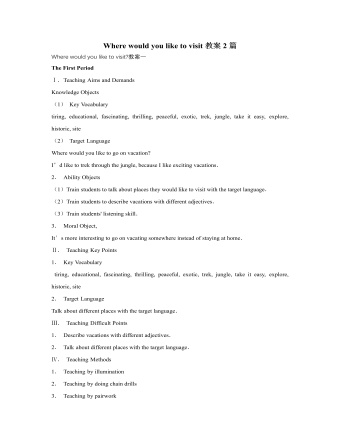
人教版新目标初中英语九年级上册Where would you like to visit教案2篇
- 页数:38页
- |大小:214.50KB
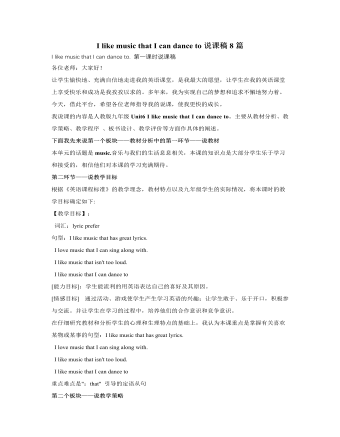
人教版新目标初中英语九年级上册I like music that I can dance to说课稿8篇
- 页数:35页
- |大小:250.00KB
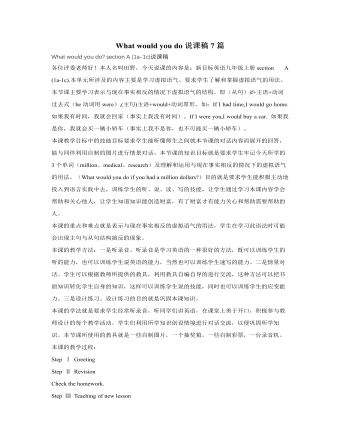
人教版新目标初中英语九年级上册What would you do说课稿7篇
- 页数:43页
- |大小:204.00KB
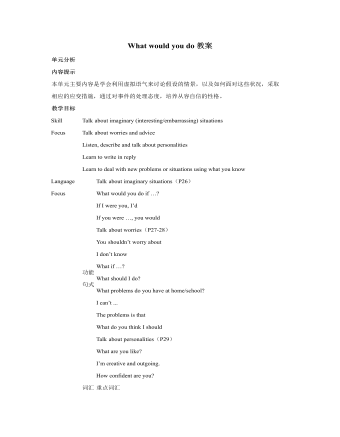
人教版新目标初中英语九年级上册What would you do教案
- 页数:20页
- |大小:593.50KB
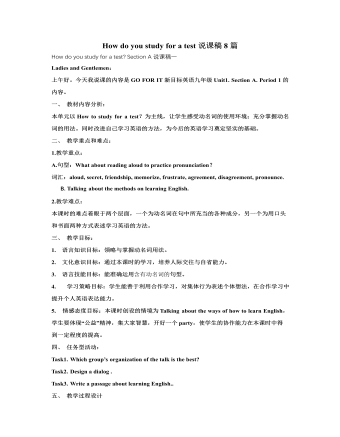
人教版新目标初中英语九年级上册How do you study for a test说课稿8篇
- 页数:39页
- |大小:218.00KB
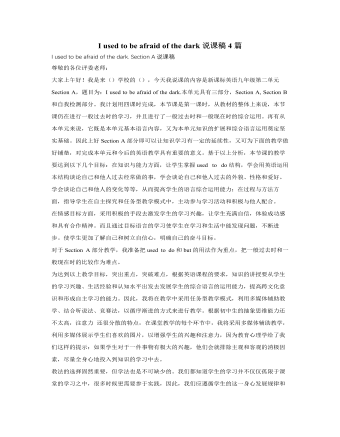
人教版新目标初中英语九年级上册I used to be afraid of the dark说课稿4篇
- 页数:22页
- |大小:344.00KB
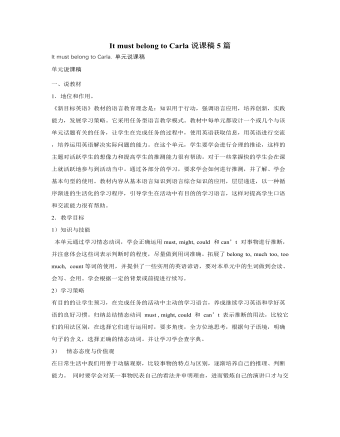
人教版新目标初中英语九年级上册It must belong to Carla说课稿5篇
- 页数:22页
- |大小:93.50KB
热门说课稿

北师大版初中八年级数学上册三角形内角和定理说课稿2篇
- 页数:6页
- |大小:60.50KB
- 说课稿
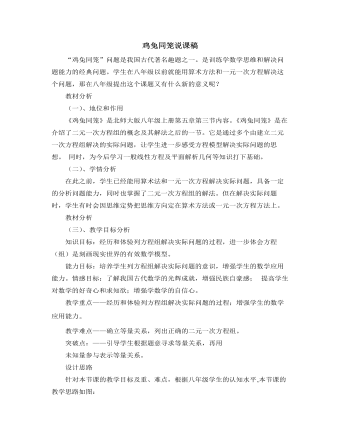
北师大版初中八年级数学上册鸡兔同笼说课稿
- 页数:4页
- |大小:62.50KB
- 说课稿
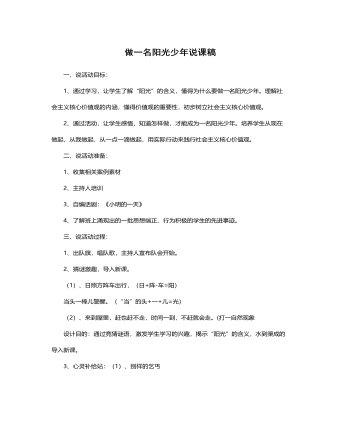
做一名阳光少年说课稿
- 页数:4页
- |大小:24.83KB
- 说课稿
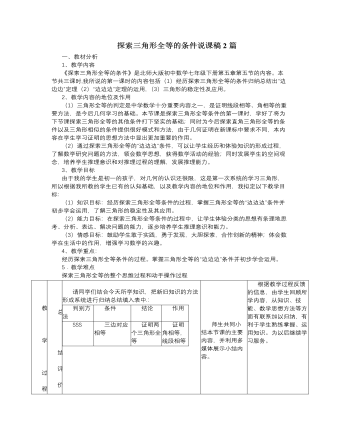
北师大版初中七年级数学下册探索三角形全等的条件说课稿2篇
- 页数:10页
- |大小:110.50KB
- 说课稿
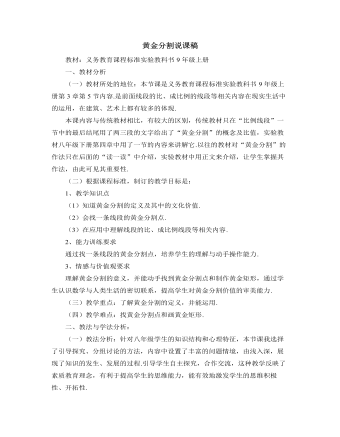
北师大版初中数学九年级上册黄金分割说课稿
- 页数:6页
- |大小:69.50KB
- 说课稿
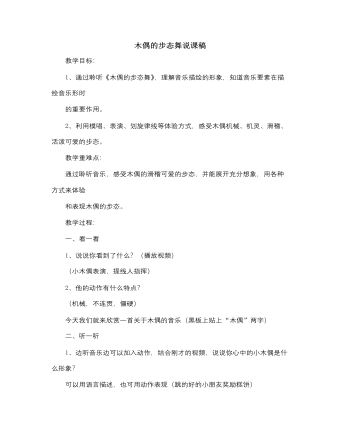
人音版小学音乐三年级下册木偶的步态舞说课稿
- 页数:4页
- |大小:34.00KB
- 说课稿
今日更新
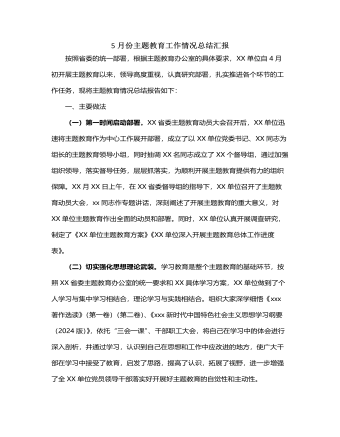
5月份主题教育工作情况总结汇报
- 页数:3页
- |大小:136.87KB

××县招商局2024年上半年工作总结
- 页数:12页
- |大小:142.54KB
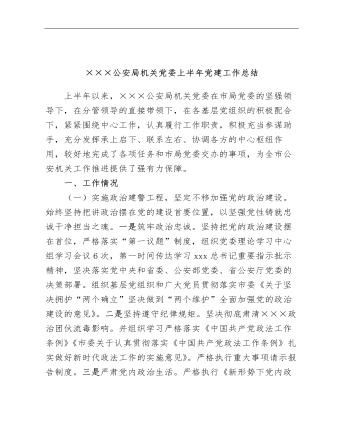
×××公安局机关党委上半年党建工作总结
- 页数:7页
- |大小:186.25KB

《2019—2024年全国党政领导班子建设规划纲要》实施情况的工作总结3800字
- 页数:6页
- |大小:29.16KB
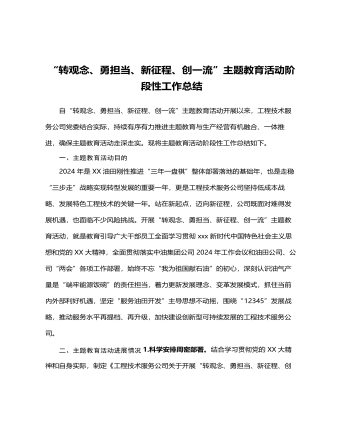
“转观念、勇担当、新征程、创一流”主题教育活动阶段性工作总结
- 页数:3页
- |大小:22.76KB

“四零”承诺服务创建工作总结
- 页数:5页
- |大小:39.83KB






